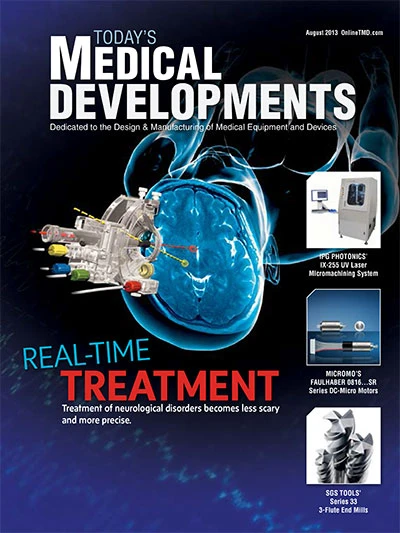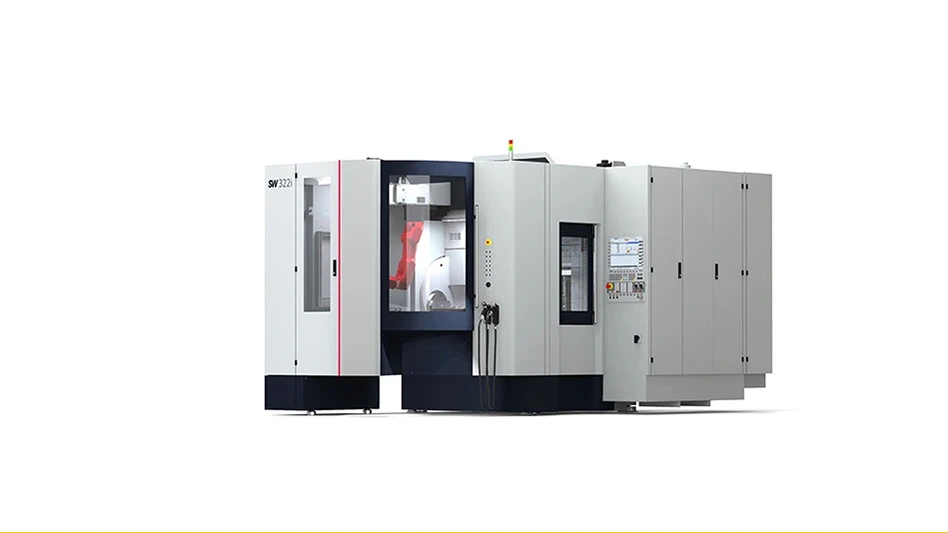A minuscule device implanted just under the skin provides an immediate analysis of substances in the body, and a radio module transmits the results to a doctor over the cellular phone network. This feat of miniaturization has many potential applications, including monitoring patients undergoing chemotherapy.
Humans are veritable chemical factories – manufacturing thousands of substances and transporting them, via our blood, throughout our bodies. Some of these substances can be used as indicators of our health status. A team of EPFL scientists has developed a tiny device that can analyze the concentration of these substances in the blood. Implanted just beneath the skin, it can detect up to five proteins and organic acids simultaneously, and then transmit the results directly to a doctor’s computer. This method will allow a much more personalized level of care than traditional blood tests can provide. Healthcare providers will be better able to monitor patients, particularly those with chronic illness, or those undergoing chemotherapy. The prototype, still in the experimental stages, has demonstrated that it can reliably detect several commonly traced substances.
Cubic Millimeters of Technology
A team led by EPFL scientists Giovanni de Micheli and Sandro Carrara developed the device. The implant, a real gem of concentrated technology, is only a few cubic millimeters in volume but includes five sensors, a radio transmitter, and a power delivery system. Outside the body, a battery patch provides one-tenth of a watt of power through the patient’s skin – so there’s no need to operate every time the battery needs changing.
Information is routed through a series of stages, from the patient’s body to the doctor’s computer screen. The implant emits radio waves over a safe frequency. The patch collects the data and transmits them via Bluetooth to a mobile phone, which then sends them to the doctor over the cellular network.
Detecting Numerous Substances
Great care was taken in developing the sensors. To capture the targeted substance in the body – such as lactate, glucose, or ATP – each sensor’s surface is covered with an enzyme.
“Potentially, we could detect just about anything,” De Micheli explains. “But the enzymes have a limited lifespan, and we have to design them to last as long as possible.”
The enzymes currently being tested are good for about a month and a half; that’s already long enough for many applications. “In addition, it’s very easy to remove and replace the implant, since it’s so small,” de Micheli says.
The electronics were a considerable challenge as well. “It was not easy to get a system like this to work on just a tenth of a watt,” de Micheli explains. The researchers also struggled to design the minuscule electrical coil that receives the power from the patch.
Toward Personalized Chemotherapy
The implant could be particularly useful in chemotherapy applications. Currently, oncologists use occasional blood tests to evaluate their patients’ tolerance to a particular treatment dosage. In these conditions, it is very difficult to administer the optimal dose.
De Micheli is convinced his system will be an important step toward better, more personalized medicine. “It will allow direct and continuous monitoring based on a patient’s individual tolerance, and not on age and weight charts or weekly blood tests.”
In patients with chronic illness, the implants could send alerts even before symptoms emerge and anticipate the need for medication. “In a general sense, our system has enormous potential in cases where the evolution of a pathology needs to be monitored or the tolerance to a treatment tested.”
The prototype has already been tested in the laboratory for five different substances, and proved as reliable as traditional analysis methods.
The project brought together electronics experts, computer scientists, doctors, and biologists from EPFL, the Istituto di Ricerca di Bellinzona, EMPA, and ETHZ. It is part of the Swiss Nano-Tera program, whose goal is to encourage interdisciplinary research in the environmental and medical fields. Researchers hope the system will be commercially available within four years.
Material derived from an original release from EPFL, http://bit.ly/11IjJpX.

Explore the August 2013 Issue
Check out more from this issue and find your next story to read.
Latest from Today's Medical Developments
- Tariffs threaten small business growth, increase costs across industries
- Feed your brain on your lunch break at our upcoming Lunch + Learn!
- Robotics action plan for Europe
- Maximize your First Article Inspection efficiency and accuracy
- UPM Additive rebrands to UPM Advanced
- Master Bond’s LED415DC90Med dual-curable adhesive
- Minalex celebrates 60 years of excellence in miniature aluminum extrusions
- Tormach’s Chip Conveyor Kit for the 1500MX CNC Mill





